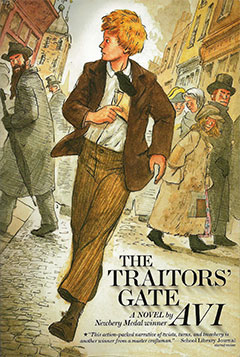 If you have read these notes of mine with any regularity you will have surely noticed that the nineteenth century British writer, Charles Dickens, has had considerable influence on my reading life and writing. I was introduced to him by my mother, who had a multi-volume set of his works on her shelves, and adored his writing, as countless others have. I knew an elderly English professor who read Dickens every night to his wife, night after night, for many, many years.
If you have read these notes of mine with any regularity you will have surely noticed that the nineteenth century British writer, Charles Dickens, has had considerable influence on my reading life and writing. I was introduced to him by my mother, who had a multi-volume set of his works on her shelves, and adored his writing, as countless others have. I knew an elderly English professor who read Dickens every night to his wife, night after night, for many, many years.
I don’t know when I started to read him, but in one sense of another I have never stopped. At a minimum, A Christmas Carol is required December reading, and it never fails to move me.
Traitors’ Gate might be called my homage to Dickens. Set in London, England, in 1849, it is full of references to the great writer, some blatant, some sly. On the blatant side, my protagonist, John Huffam, takes his name from Dickens’ full name, Charles John Huffam Dickens. Moreover, the plot derives from a crucial incident in young Dickens’ life, when his father was imprisoned for debt. Indeed, my novel begins:
“By the end of the week” said my father, as if speaking of a change in weather, “there’s a possibility I shall be sent to prison.”
Because the Victorians of the day were fascinated by their own society, they wrote voluminous descriptions of their world, trying but generally not succeeding in understanding it. Thus to do research about Victorian London—from the slums (rookeries), to churches, to wealthy homes, to jails—is to have a veritable library in easy reach. What food do you get in prison? How much? I found that. And maps! Wherever my characters go, they tread real ground.
The novel is in no way about Dickens, but surely it is my attempt to re-create his world and bravura writing. In truth, the most fun of all was to write characters with the broad satirical range that Dickens’ style allowed. I truly laughed as I wrote about Mr. Snugsbe, and his theory of coats which he used to explain the world. Writing a book that makes one smile is very much a task of pleasure. One can only hope readers will enjoy reading the book as much I enjoyed writing it “Imitation,” said Oscar Wilde, “is the sincerest form of flattery.”
Traitors’ Gate is my attempt to flatter Dickens.
And, if you do nothing else, do check out Mr. Snugsbe’s theory of coats. It just might fit you.
3 thoughts on “Story Behind the Story #51: Traitors’ Gate”
As a puppeteer, artist in residence in the Bayport school district, I had a 5th grade do The Christmas Carol, Bunraku style. We performed it just before Christmas and it was a big success. As many times as I had read it, the drama brought it home. I think his ability to create the scenes, the atmosphere was pure genius.
I have seen Bunraku performed a few times. Quite wonderful. I could see how this form of puppetry would work with The Christmas Carol. Wish I had seen it!
One of my favorite films is The Muppets Christmas Carol. The usual Muppets flare is there, complete with songs- “Feels Like Christmas”, “The Love We Found” and who could forget “Marley and Marley”?